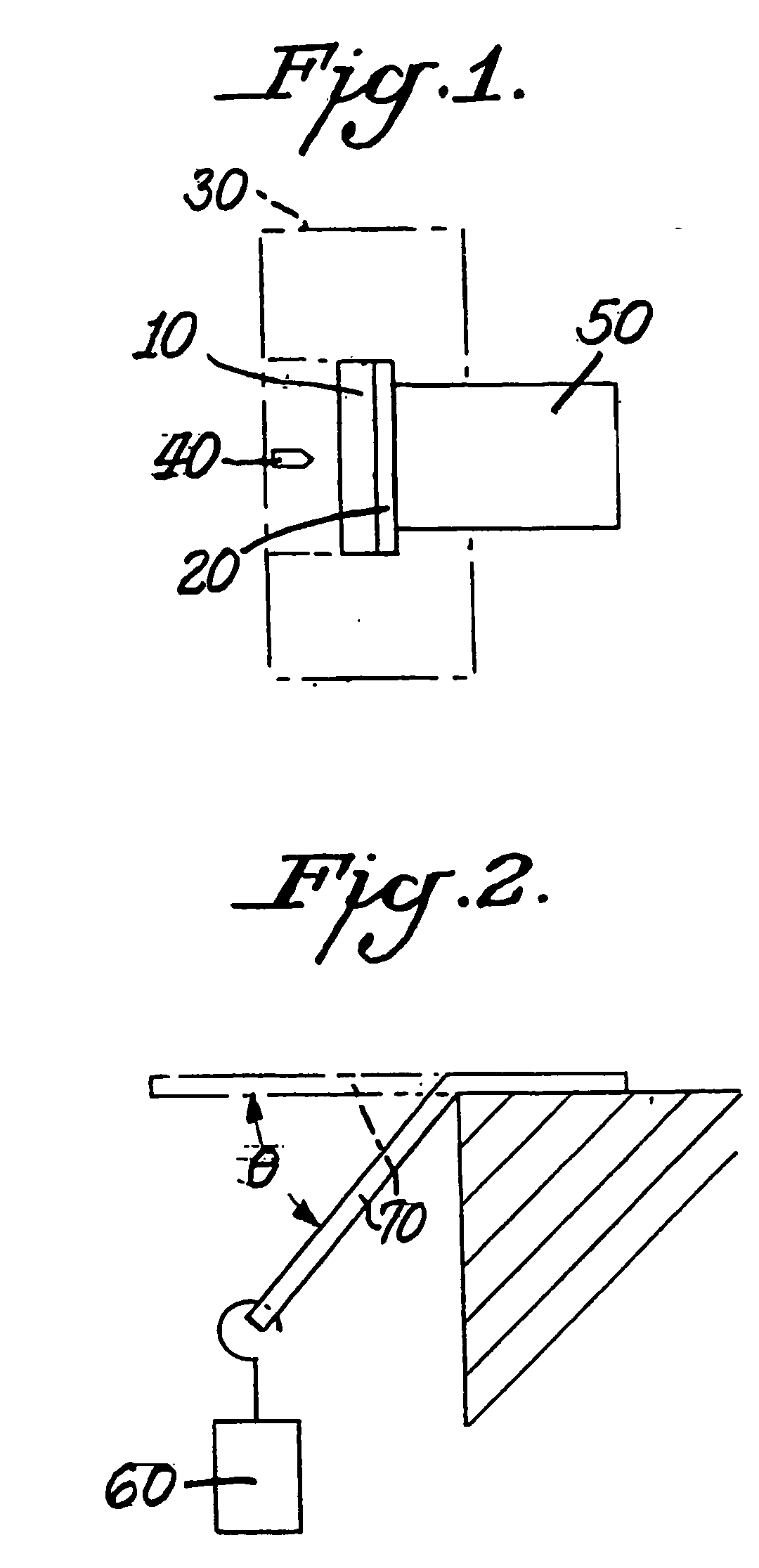Advanced body armor utilizing shear thickening fluids
a technology of body armor and thickening fluid, which is applied in the direction of knitting, weaving, straight-bar knitting machines, etc., can solve the problems of limited chest and head protection, significant percentage of battlefield injuries to the extremities, and limited body armor, so as to achieve high modulus, not impede fabric flexibility, and high strength
- Summary
- Abstract
- Description
- Claims
- Application Information
AI Technical Summary
Benefits of technology
Problems solved by technology
Method used
Image
Examples
example 1
Ballistic Performance
[0032] In the following examples silica particles (Nissan Chemicals MP4540) were suspended in ethylene glycol, at a volume fraction of approximately 0.57. The average particle diameter, as measured using dynamic light scattering, was determined to be 446 nm. Rheological measurements have shown that this STF undergoes a shear thickening transition at a shear rate of approximately 102-103 s−1. Additionally, this transition is reversible, i.e. this liquid-to-solid transition induced by flow is not associated with particle aggregation, nor does it result in any irreversible change in the dispersion. Full details regarding the preparation and rheological properties of the STF can be found in Lee et al., J. Mat. Sci., 2002 and Lee and Wagner Rheol. Acta., 2002.
[0033] The Kevlar® fabric used in all composite target constructions was 600 denier plain-woven Hexcel-Schwebel high performance fabric Style 706 composed of Kevlar® KM-2 aramid fibers (poly-paraphenylene tere...
example 2
Stab Performance
[0053] In the following examples silica particles (Nippon Shokubai Seahostar KE-P50) were suspended in polyethylene glycol, at a volume fraction of approximately 0.52. The average particle diameter, as measured using dynamic light scattering, was determined to be 450 nm. The Kevlar fabric used was 600 denier plain-woven Hexcel-Schwebel high performance fabric Style 706 composed of Kevlar® KM-2 aramid fibers (poly-paraphenylene terephthalamide) with an areal density of 180 g / m2.
[0054] Two targets are compared: 15 layers of neat Kevlar fabric, with an areal density of 2670 g / m2, and 12 layers of STF-Kevlar, with an areal density of 2650 g / m2. The STF-Kevlar sample was prepared according to the methods in Example 1. Note that both targets have comparable areal densities. The neat Kevlar sample is approximately 25.4 cm×35.6 cm, while the STF-Kevlar sample is approximately 50.8 cm×35.6 cm.
[0055] Stab resistance measurements were performed using an end effector fabricat...
PUM
| Property | Measurement | Unit |
|---|---|---|
| diameter size | aaaaa | aaaaa |
| diameter size | aaaaa | aaaaa |
| size | aaaaa | aaaaa |
Abstract
Description
Claims
Application Information
 Login to View More
Login to View More - R&D
- Intellectual Property
- Life Sciences
- Materials
- Tech Scout
- Unparalleled Data Quality
- Higher Quality Content
- 60% Fewer Hallucinations
Browse by: Latest US Patents, China's latest patents, Technical Efficacy Thesaurus, Application Domain, Technology Topic, Popular Technical Reports.
© 2025 PatSnap. All rights reserved.Legal|Privacy policy|Modern Slavery Act Transparency Statement|Sitemap|About US| Contact US: help@patsnap.com

